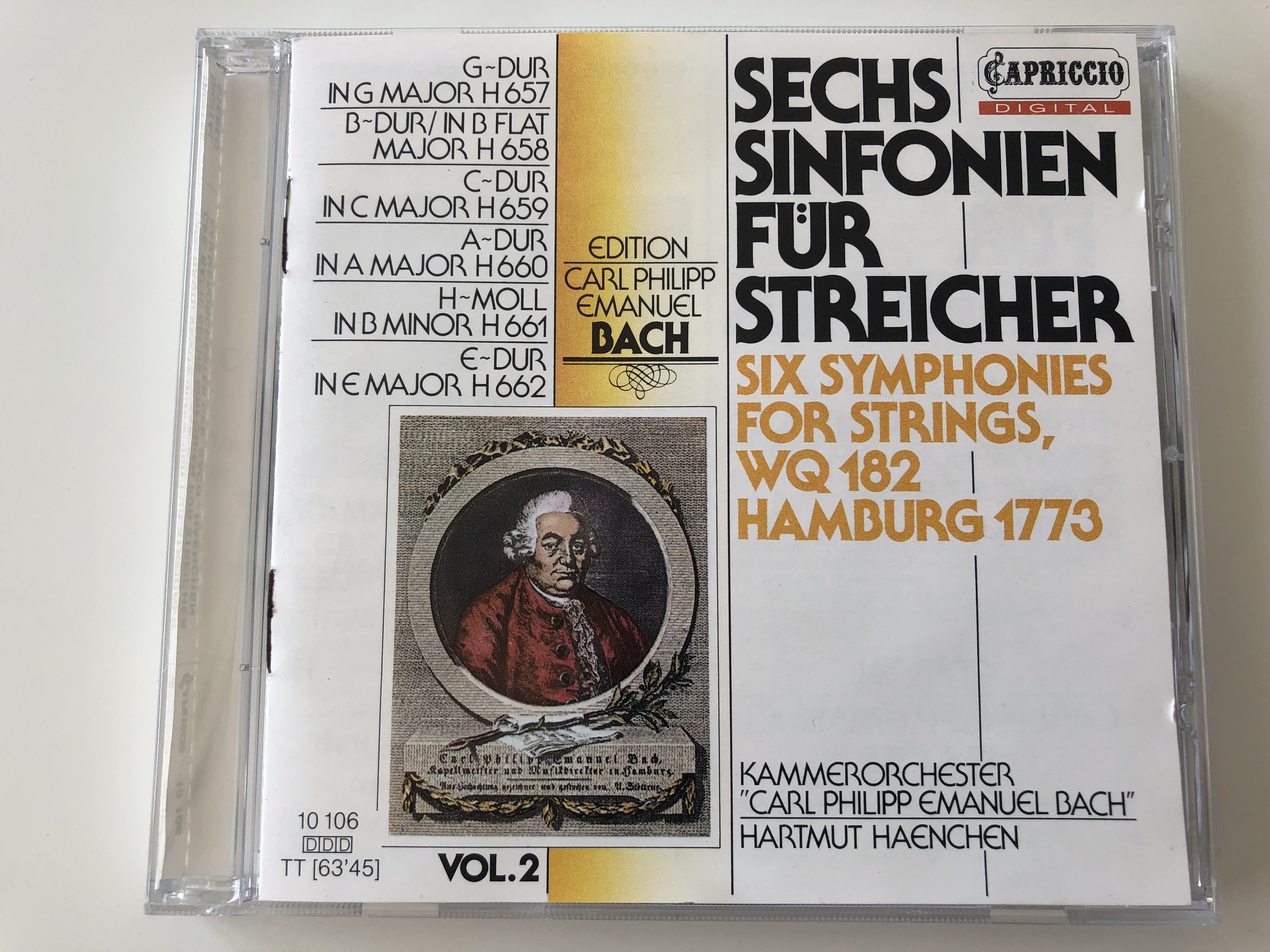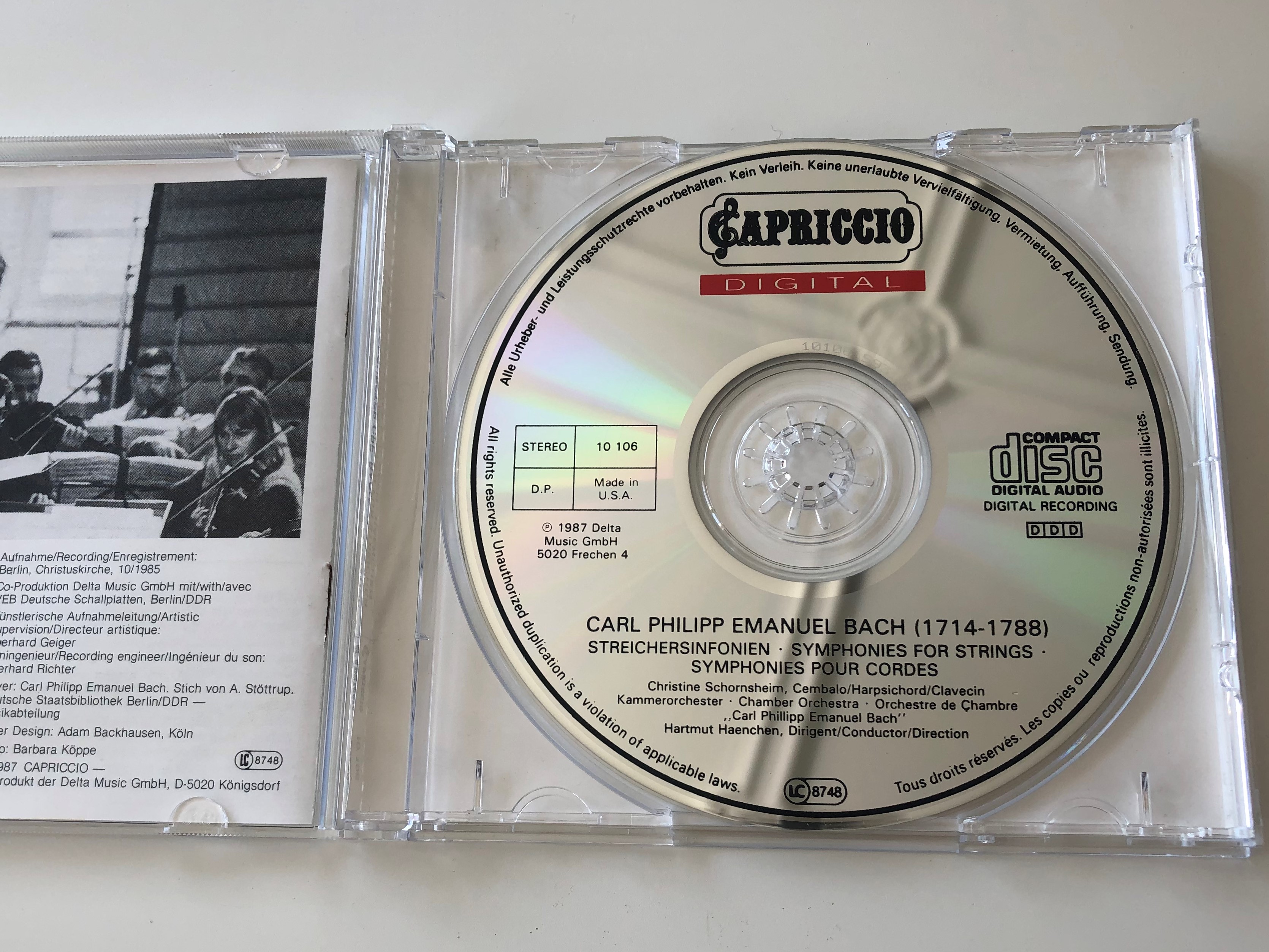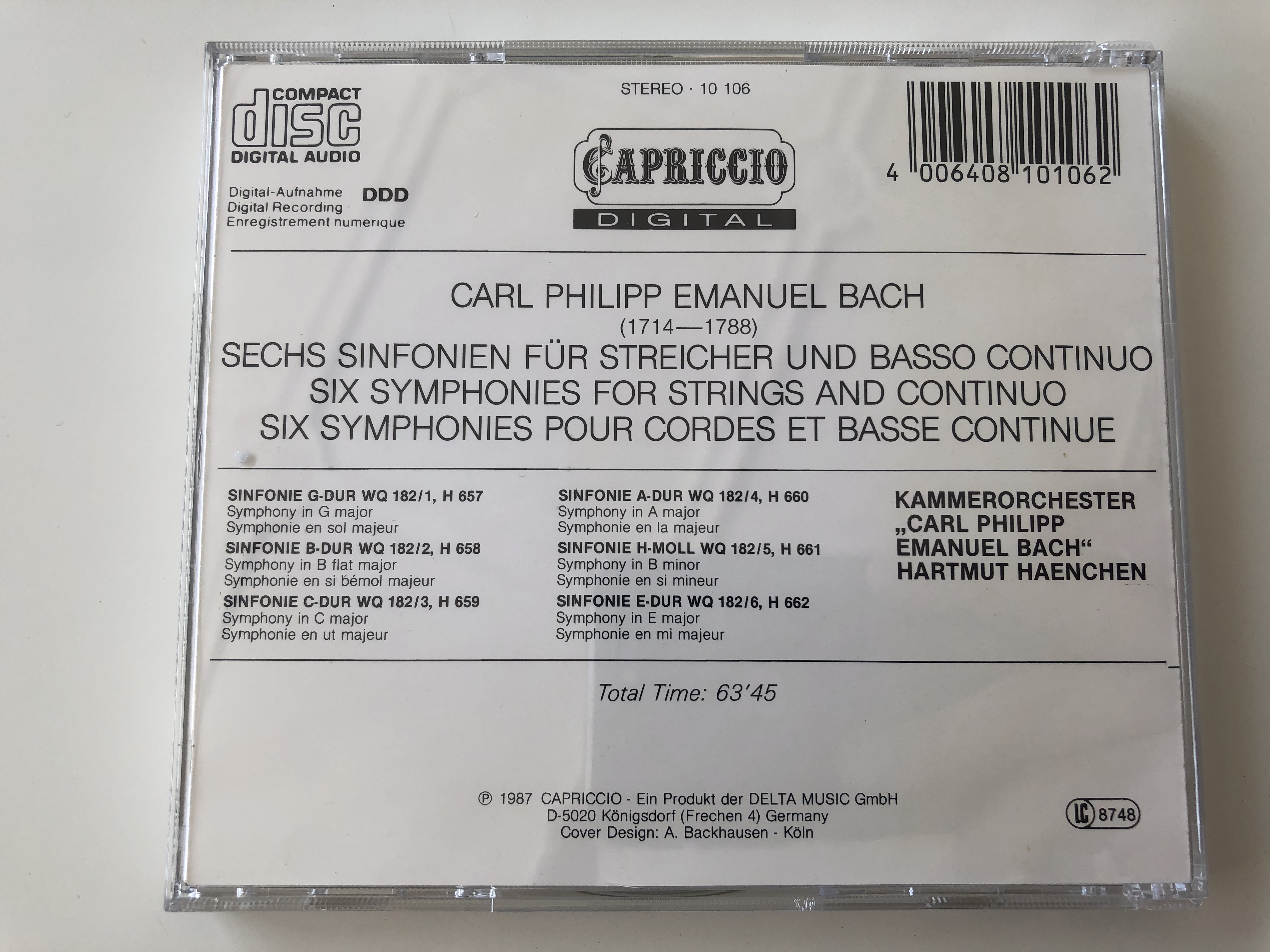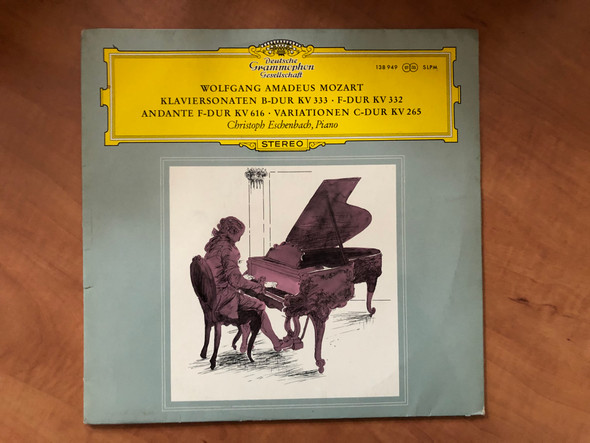Description
Sechs Sinfonien Für Streicher - Six Symphonies For Strings, WQ 182 , Hamburg 1773 / G-Dur In G Major H657, B-Dur In B Flat Major H658, C-Dur In C Major H659, A-Dur In A Major H660, H-Moll In B Minor H661 / Capriccio Audio CD 1987 Stereo / 10106
UPC 4006408101062
Product Details:
Tracklist:
| Sinfonie G-Dur WQ 182/1, H 657 | ||
| 1 | 1. Allegro Di Molto | 4:03 |
| 2 | 2. Poco Adagio | 3:20 |
| 3 | 3. Presto | 4:13 |
|
Sinfonie B-Dur WQ 182/2, H 658 |
||
| 4 | 1. Allefro Di Molto | 3:34 |
| 5 | 2. Poco Adagio | 3:20 |
| 6 | 3. Presto | 3:49 |
|
Sinfonie C-Dur WQ 182/3, H 659 |
||
| 7 | 1. Allegro Assai | 2:44 |
| 8 | 2. Adagio | 3:37 |
| 9 | 3. Allegretto | 3:05 |
|
Sinfonie A-Dur WQ 182/4, H 660 |
||
| 10 | 1. Allegro Ma Non Troppo | 4:28 |
| 11 | 2. Largo Ed Innocentemente | 3:51 |
| 12 | 3. Allegro Assai | 3:20 |
|
Sinfonie H-Moll WQ 182/5, H 661 |
||
| 13 | 1. Allegretto | 4:31 |
| 14 | 2. Larghetto | 2:42 |
| 15 | 3. Presto | 3:54 |
|
Sinfonie E-Dur WQ 182/6, H 662 |
||
| 16 | 1. Allegro Di Molto | 2:19 |
| 17 |
2. Poco Andante | 4:06 |
| 18 | 3. Allegro Spirituoso | 2:25 |
About the Symphonies:
C.P.E. Bach composed the six "Hamburg" Sinfonias to fulfill a commission by Baron Gottfried van Swieten (the noted eighteenth century Austrian diplomat who was a patron of Mozart and Beethoven, and who wrote the texts for Haydn's Creation and The Seasons). Van Swieten gave Bach free reign to compose these works as he wished, so the result is one of startling originality. The sinfonias are all in the more "conservative" three-movement form (some composers, such as the Mannheim school's Johann Stamitz, were already adding a fourth movement to their sinfonias, which became the standard for Haydn, Mozart, and Beethoven); but, they are far from conservative or restrained in terms of harmonic, thematic, and emotional invention.
Already in the first couple of measures of the Sinfonia No. 1 we find the dramatic shifts of mood and dynamics that are perfect examples of the empfindsamer Stil, or sensitive style, prevalent in northern Germany at this time (a direct challenge to the Baroque ideal of one consistent emotion throughout the movement). The sinfonias are marked by the same restless, passionate, impetuous, and humorous quality that is also evident in the early works of Haydn. Grace and elegance coexist with unpredictability and the willingness to surprise.
Sudden shifts in key and an asymmetry of phrasing make these works all the more engaging. The wonderfully abrupt ending of the first movement of Sinfonia No. 2, Allegro di molto, is a case in point. Many sections culminate in theatrically conceived unisons, a favorite device of Bach's, and better yet are the abrupt transitions whereby one movement simply elides into the next without preparation. Examples of this are found at the end of the first movements of both Sinfonias No. 3 and No. 5.
There is no strict formula for the structure of the outer fast movements in terms of meter, tempo, or mood. The slow movements rely heavily on chromaticism and ornamental devices such as the appoggiatura (stress of a dissonant note on a strong part of the beat, resolving on the weaker part of the beat creating the feeling of a "sigh"). The second movement of Sinfonia No. 6, Poco andante, contains a beautifully meandering and tonally ambiguous middle section.
More Details:
- Co-producer – Delta Music GmbH, VEB Deutsche Schallplatten Berlin
- Composed By – Carl Philipp Emanuel Bach
- Conductor – Hartmut Haenchen
- Design – Adam Backhausen
- Engineer – Eberhard Richter
- Harpsichord – Christine Schornsheim
- Liner Notes – Dr. Hans-Günter Ottenberg
- Liner Notes [Traduction] – Violaine Trentesaux
- Liner Notes [Translation] – Rick Fulker
- Orchestra – Kammerorchester "Carl Philipp Emanuel Bach"
- Photography By – Barbara Köppe
- Recording Supervisor – Eberhard Geiger


































